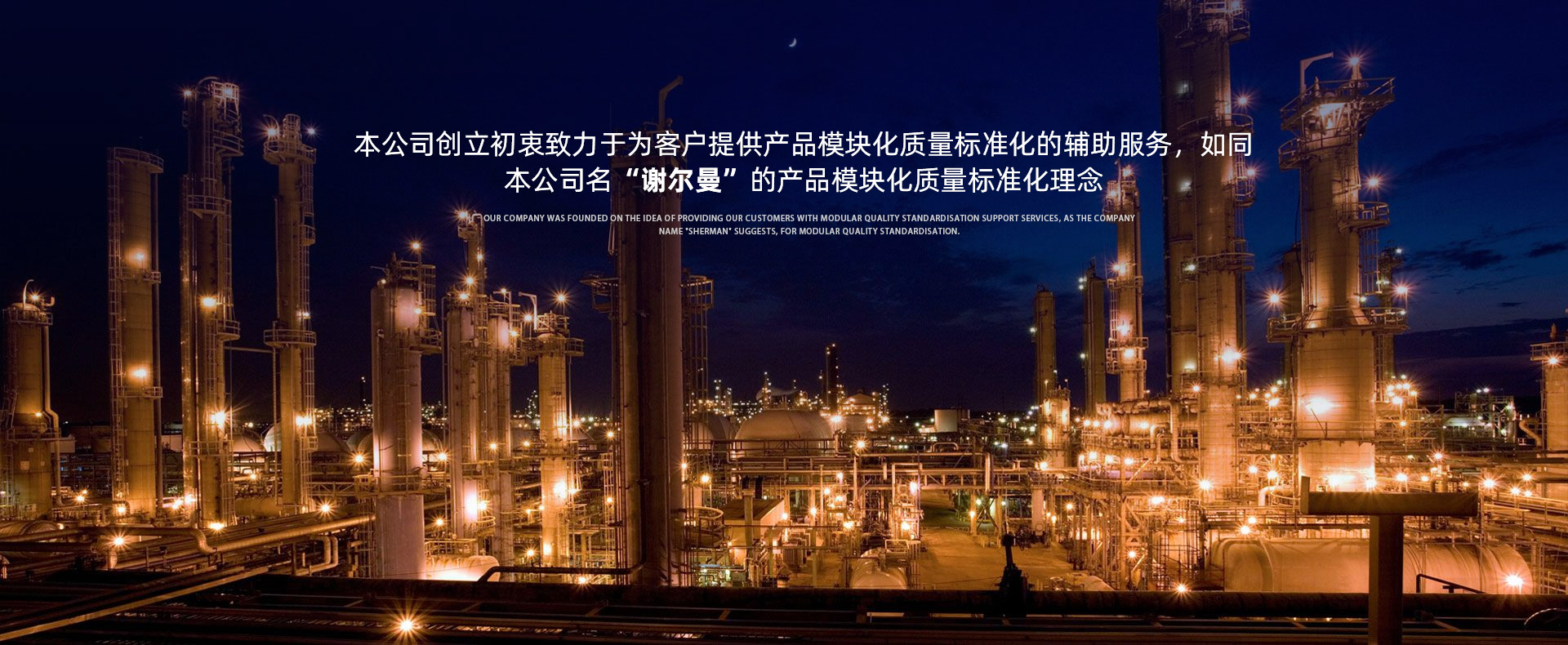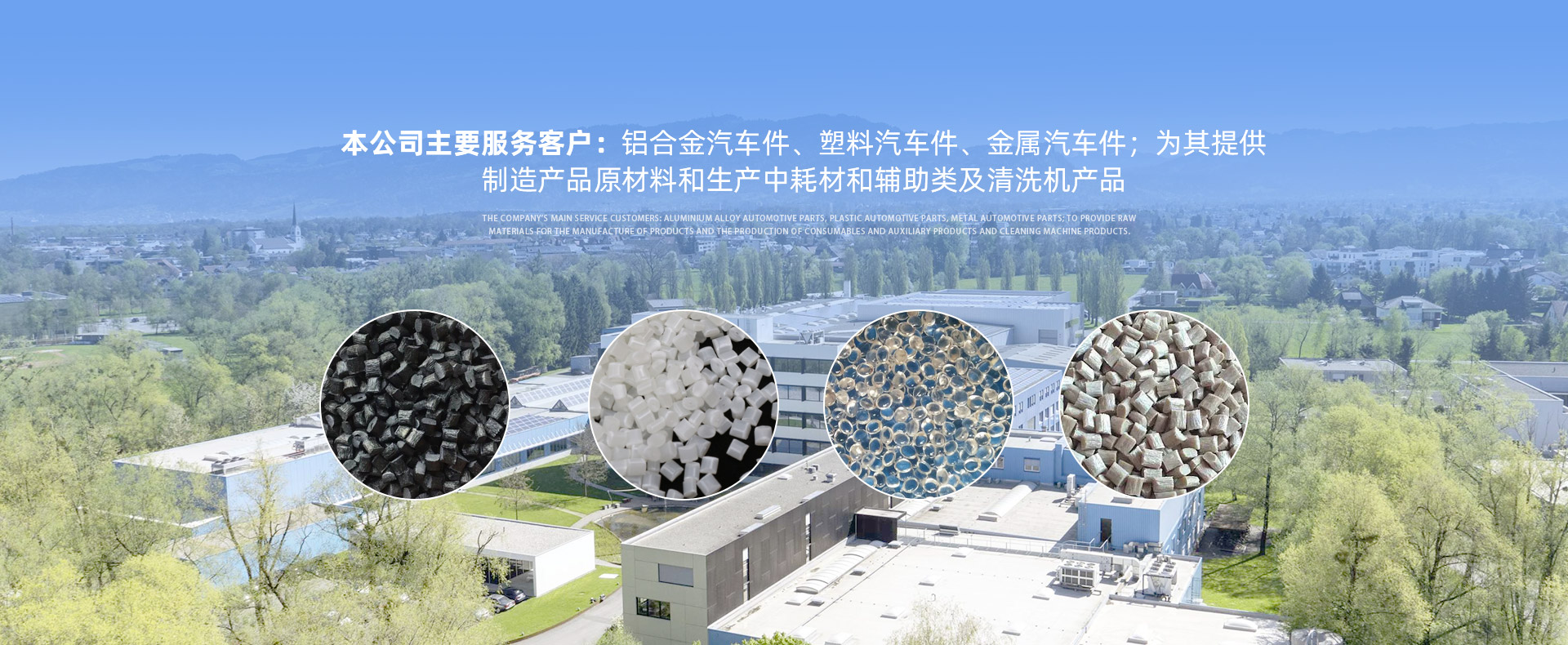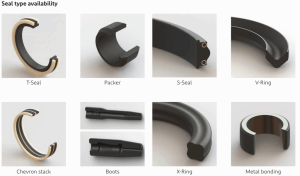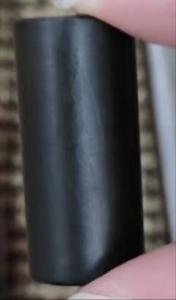产品展厅
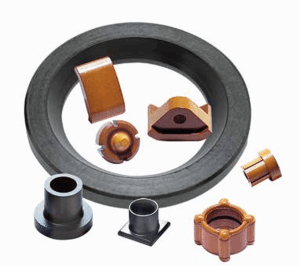
|
Vespel CR-6100 PI DuPont 杜邦
- 品牌:DuPont 杜邦
- 价格: ¥13.7/千克
- 发布日期: 2024-08-09
- 更新日期: 2025-04-08
产品详请
| 品牌 | DuPont 杜邦 |
| 货号 | |
| 用途 | Vespel? 制造的部件重量更轻,不仅实用,而且在许多情况下,比标准金属、陶瓷和其他工程聚合物(如 PEEK(聚醚醚酮)和 PAI(聚酰胺酰亚胺))更好。 |
| 牌号 | Vespel CR-6100 |
| 型号 | Vespel CR-6100 |
| 品名 | 聚酰亚胺类 |
| 包装规格 | 板、棒、管、方块、长条、圆盘、环、圆球和定制机加工制件 |
| 外形尺寸 | 板、棒、管、方块、长条、圆盘、环、圆球和定制机加工制件 |
| 生产企业 | DuPont 杜邦 |
| 是否进口 |
Vespel 是杜邦公司生产的一系列耐用高性能聚酰亚胺基塑料的商标。
特点和应用
Vespel 主要用于航空航天、半导体和运输技术。它结合了耐热性、润滑性、尺寸稳定性、耐化学性和抗蠕变性,可用于恶劣和 的环境条件。
与大多数塑料不同,即使在高温下也不会产生明显的释气,这使得它可用于轻质隔热罩和坩埚支撑。它在真空应用中也表现良好,低至极低的低温。然而,Vespel 往往会吸收少量的水,从而导致放置在真空中的泵时间更长。
尽管在这些特性中,有些聚合物都超过了聚酰亚胺,但它们的结合是 Vespel 的主要优势。
热物理性质
Vespel 通常用作测试热绝缘体的导热性参考材料,因为它具有高再现性和热物理性能的一致性。例如,它可以承受高达 300 °C 的反复加热,而不会改变其热性能和机械性能。已经发布了大量测量的热扩散率、比热容和推导密度的表格,这些表格都是温度的函数。
磁性
Vespel 用于 NMR 波谱的高分辨率探针,因为它的体积磁化率(Vespel SP-1 在 21.8 °C 时为 -9.02 ± 0.25×10?6[5])接近室温下的水(20 °C 时为 -9.03×10?6 [6]) 负值表示两种物质都是抗磁性的.将NMR样品周围材料的体积磁化率与溶剂的体积磁化率相匹配,可以减少磁共振线的磁化率展宽。
制造应用加工
Vespel 可以通过直接成型 (DF) 和等静压成型(基本形状 - 板材、棒材和管材)进行加工。对于原型数量,通常使用基本形状以提高成本效益,因为 DF 零件的工具成本相当高。对于大规模的CNC生产,DF零件通常用于降低每个零件的成本,而牺牲的材料性能不如等静压生产的基本形状。
类型
对于不同的应用,特殊配方被混合/复合。形状由三个标准过程生成:
压缩成型(用于板材和环);
等静压成型(棒材用);和
直接成型(用于大批量生产的小尺寸零件)。
与从压缩成型或等静压形状加工而成的零件相比,直接成型零件的性能特征较低。等静压形状具有各向同性的物理性质,而直接成型和压缩成型的形状表现出各向异性的物理性质。
标准聚酰亚胺化合物的一些例子是:
SP-1原生聚酰亚胺提供从低温到 300 °C (570 °F) 的工作温度、高等离子体电阻以及 UL 等级,可实现最小的导电性和导热性。这是未填充的基质聚酰亚胺树脂。它还提供高物理强度和 伸长率,以及 的电气和热绝缘值。示例:Vespel SP-1。15%石墨(按重量计),SP-21添加到基础树脂中,可提高耐磨性并减少摩擦,适用于滑动轴承、止推垫圈、密封环、滑块和其他磨损应用。这种化合物具有石墨填充等级中 的机械性能,但低于原始等级。示例:Vespel SP-21。40%石墨(按重量计),SP-22增强耐磨性、降低摩擦、提高尺寸稳定性(低热膨胀系数)和抗氧化稳定性。示例:Vespel SP-22。10%聚四氟乙烯和15%石墨(按重量计),SP-211添加到基础树脂中,可在各种操作条件下实现 的摩擦系数。它还具有出色的耐磨性, 可达 149 °C (300 °F)。典型应用包括滑动轴承或直线轴承,以及上面列出的许多磨损和摩擦用途。示例:Vespel SP-211。15%填充钼(二硫化钼固体润滑剂),SP-3在真空和其他无湿环境中,石墨实际上会变得具有磨蚀性,具有耐磨性和耐摩擦性。典型应用包括密封件、滑动轴承、齿轮和外太空中的其他磨损表面、超高真空或干燥气体应用。示例:Vespel SP-3。
材料属性数据
Vespel的材料特性(通过等静压成型和机械加工生产)
财产 单位 测试
条件 SP-1
(未填充) SP-21
(15%石墨) SP-22
(40%石墨) SP-211
(10%聚四氟乙烯,
15%石墨) SP-3
(15%钼
2)
比重 无量 纲 1.43 1.51 1.65 1.55 1.60
热膨胀
系数 10?6/K 211–296 千米 45 34 27 [9]
296–573 千米 54 49 38 54 52
导热 W/mK 在 313 K 0.35 0.87 1.73 0.76 0.47
体积电阻率 Ω·米 在 296 K 1014-10 15 1012-10 13
介电常数 无量 纲 在 100 Hz 时 3.62 13.53
在 10 kHz 时 3.64 13.28
在 1 MHz 时 3.55 13.41
Vespel is the trademark of a range of durable high-performance polyimide-based plastics made by DuPont.[1][2]
Characteristics and applications
[edit]
Vespel is mostly used in aerospace, semiconductor, and transportation technology. It combines heat resistance, lubricity, dimensional stability, chemical resistance, and creep resistance, and can be used in hostile and extreme environmental conditions.
Unlike most plastics,[3] it does not produce significant outgassing even at high temperatures, which makes it useful for lightweight heat shields and crucible support. It also performs well in vacuum applications,[4] down to extremely low cryogenic temperatures. However, Vespel tends to absorb a small amount of water, resulting in longer pump time while placed in a vacuum.
Although there are polymers surpassing polyimide in each of these properties, the combination of them is the main advantage of Vespel.
Thermophysical properties
[edit]
Vespel is commonly used as a thermal conductivity reference material for testing thermal insulators, because of high reproducibility and consistency of its thermophysical properties. For example, it can withstand repeated heating up to 300 °C without altering its thermal and mechanical properties.[citation needed] Extensive tables of measured thermal diffusivity, specific heat capacity, and derived density, all as functions of temperature, have been published.[citation needed]
Magnetic properties
[edit]
Vespel is used in high-resolution probes for NMR spectroscopy because its volume magnetic susceptibility (?9.02 ± 0.25×10?6 for Vespel SP-1 at 21.8 °C[5]) is close to that of water at room temperature (?9.03×10?6 at 20 °C [6]) Negative values indicate that both substances are diamagnetic. Matching volume magnetic susceptibilities of materials surrounding NMR sample to that of the solvent can reduce susceptibility broadening of magnetic resonance lines.
Processing for manufacturing applications
[edit]
Vespel can be processed by direct forming (DF) and isostatic molding (basic shapes – plates, rods and tubes). For prototype quantities, basic shapes are typically used for cost efficiency since tooling is quite expensive for DF parts. For large scale CNC production, DF parts are often used to reduce per part costs, at the expense of material properties which are inferior to those of isostatically produced basic shapes.[7]
Types
[edit]
For different applications, special formulations are blended/compounded. Shapes are produced by three standard processes:
compression molding (for plates and rings);
isostatic molding (for rods); and
direct forming (for small size parts produced in large volumes).
Direct-formed parts have lower performance characteristics than parts that have been machined from compression-molded or isostatic shapes. Isostatic shapes have isotropic physical properties, whereas direct formed and compression molded shapes exhibit anisotropic physical properties.
Some examples of standard polyimide compounds are:
SP-1 virgin polyimideprovides operating temperatures from cryogenic to 300 °C (570 °F), high plasma resistance, as well as a UL rating for minimal electrical and thermal conductivity. This is the unfilled base polyimide resin. It also provides high physical strength and maximal elongation, and the best electrical and thermal insulation values. Example: Vespel SP-1.15% graphite by weight, SP-21added to the base resin for increased wear resistance and reduced friction in applications such as plain bearings, thrust washers, seal rings, slide blocks and other wear applications. This compound has the best mechanical properties of the graphite-filled grades, but lower than the virgin grade. Example: Vespel SP-21.40% graphite by weight, SP-22for enhanced wear resistance, lower friction, improved dimensional stability (low coefficient of thermal expansion), and stability against oxidation. Example: Vespel SP-22.10% PTFE and 15% graphite by weight, SP-211added to the base resin for the lowest coefficient of friction over a wide range of operating conditions. It also has excellent wear resistance up to 149 °C (300 °F). Typical applications include sliding or linear bearings as well as many wear and friction uses listed above. Example: Vespel SP-211.15% moly-filled (molybdenum disulfide solid lubricant), SP-3for wear and friction resistance in vacuum and other moisture-free environments where graphite actually becomes abrasive. Typical applications include seals, plain bearings, gears, and other wear surfaces in outer space, ultra-high vacuum or dry gas applications. Example: Vespel SP-3.
Material properties data
[edit]
Material properties of Vespel[8] (produced by isostatic molding and machining)
Property Units Test
condition SP-1
(unfilled) SP-21
(15% graphite) SP-22
(40% graphite) SP-211
(10% PTFE,
15% graphite) SP-3
(15% MoS
2)
Specific gravity dimensionless 1.43 1.51 1.65 1.55 1.60
Thermal expansion
coefficient 10?6/K 211–296 K 45 34 27 [9]
296–573 K 54 49 38 54 52
Thermal conductivity W/mK at 313 K 0.35 0.87 1.73 0.76 0.47
Volume resistivity Ω·m at 296 K 1014–1015 1012–1013
Dielectric constant dimensionless at 100 Hz 3.62 13.53
at 10 kHz 3.64 13.28
at 1 MHz 3.55 13.122
性能优势
飞机发动机外件
杜邦™ Vespel® 可以帮助解决飞机发动机外部部件的严苛密封、磨损、摩擦、振动和耐热性挑战。
Vespel® 飞机发动机风扇叶片材料
杜邦™ Vespel® 为飞机风扇叶片耐磨条和叶片垫片提供经过验证的强度、耐磨性和低摩擦。
发动机部件
杜邦™ Vespel® 零件在高温下具有持久的性能,摩擦和磨损小,是衬套、垫圈和密封圈的理想选择。
涡轮增压器
杜邦™ Vespel® 部件有助于减少排放,同时具有耐热性和隔热性,是涡轮增压器和 EGR 系统的理想选择。
半导体制造后端
尺寸稳定的杜邦™ Vespel® 部件是晶圆处理和芯片测试的理想选择 - 它们磨损低,不会损坏金属或陶瓷等晶圆。
飞机发动机短舱设计
杜邦™ Vespel® 具有久经考验的剪切强度、抗冲击性和减轻重量,可提高飞机发动机短舱的性能。
Vespel® 发动机机油系统密封件
杜邦™ Kalrez® O 形圈、垫圈和定制密封件可承受喷气燃料、发动机润滑油、液压油、火箭推进剂和氧化剂的侵蚀。
动力运动车辆
杜邦™ Vespel® 离合器组件具有韧性、高摩擦下的低磨损和抗冲击性,使其成为全地形车、摩托车等的理想选择。
飞机发动机短舱设计
杜邦™ Vespel® 具有久经考验的剪切强度、抗冲击性、轻量化和高耐热性,可提高飞机发动机短舱性能。
传动系统组件
特点和应用
Vespel 主要用于航空航天、半导体和运输技术。它结合了耐热性、润滑性、尺寸稳定性、耐化学性和抗蠕变性,可用于恶劣和 的环境条件。
与大多数塑料不同,即使在高温下也不会产生明显的释气,这使得它可用于轻质隔热罩和坩埚支撑。它在真空应用中也表现良好,低至极低的低温。然而,Vespel 往往会吸收少量的水,从而导致放置在真空中的泵时间更长。
尽管在这些特性中,有些聚合物都超过了聚酰亚胺,但它们的结合是 Vespel 的主要优势。
热物理性质
Vespel 通常用作测试热绝缘体的导热性参考材料,因为它具有高再现性和热物理性能的一致性。例如,它可以承受高达 300 °C 的反复加热,而不会改变其热性能和机械性能。已经发布了大量测量的热扩散率、比热容和推导密度的表格,这些表格都是温度的函数。
磁性
Vespel 用于 NMR 波谱的高分辨率探针,因为它的体积磁化率(Vespel SP-1 在 21.8 °C 时为 -9.02 ± 0.25×10?6[5])接近室温下的水(20 °C 时为 -9.03×10?6 [6]) 负值表示两种物质都是抗磁性的.将NMR样品周围材料的体积磁化率与溶剂的体积磁化率相匹配,可以减少磁共振线的磁化率展宽。
制造应用加工
Vespel 可以通过直接成型 (DF) 和等静压成型(基本形状 - 板材、棒材和管材)进行加工。对于原型数量,通常使用基本形状以提高成本效益,因为 DF 零件的工具成本相当高。对于大规模的CNC生产,DF零件通常用于降低每个零件的成本,而牺牲的材料性能不如等静压生产的基本形状。
类型
对于不同的应用,特殊配方被混合/复合。形状由三个标准过程生成:
压缩成型(用于板材和环);
等静压成型(棒材用);和
直接成型(用于大批量生产的小尺寸零件)。
与从压缩成型或等静压形状加工而成的零件相比,直接成型零件的性能特征较低。等静压形状具有各向同性的物理性质,而直接成型和压缩成型的形状表现出各向异性的物理性质。
标准聚酰亚胺化合物的一些例子是:
SP-1原生聚酰亚胺提供从低温到 300 °C (570 °F) 的工作温度、高等离子体电阻以及 UL 等级,可实现最小的导电性和导热性。这是未填充的基质聚酰亚胺树脂。它还提供高物理强度和 伸长率,以及 的电气和热绝缘值。示例:Vespel SP-1。15%石墨(按重量计),SP-21添加到基础树脂中,可提高耐磨性并减少摩擦,适用于滑动轴承、止推垫圈、密封环、滑块和其他磨损应用。这种化合物具有石墨填充等级中 的机械性能,但低于原始等级。示例:Vespel SP-21。40%石墨(按重量计),SP-22增强耐磨性、降低摩擦、提高尺寸稳定性(低热膨胀系数)和抗氧化稳定性。示例:Vespel SP-22。10%聚四氟乙烯和15%石墨(按重量计),SP-211添加到基础树脂中,可在各种操作条件下实现 的摩擦系数。它还具有出色的耐磨性, 可达 149 °C (300 °F)。典型应用包括滑动轴承或直线轴承,以及上面列出的许多磨损和摩擦用途。示例:Vespel SP-211。15%填充钼(二硫化钼固体润滑剂),SP-3在真空和其他无湿环境中,石墨实际上会变得具有磨蚀性,具有耐磨性和耐摩擦性。典型应用包括密封件、滑动轴承、齿轮和外太空中的其他磨损表面、超高真空或干燥气体应用。示例:Vespel SP-3。
材料属性数据
Vespel的材料特性(通过等静压成型和机械加工生产)
财产 单位 测试
条件 SP-1
(未填充) SP-21
(15%石墨) SP-22
(40%石墨) SP-211
(10%聚四氟乙烯,
15%石墨) SP-3
(15%钼
2)
比重 无量 纲 1.43 1.51 1.65 1.55 1.60
热膨胀
系数 10?6/K 211–296 千米 45 34 27 [9]
296–573 千米 54 49 38 54 52
导热 W/mK 在 313 K 0.35 0.87 1.73 0.76 0.47
体积电阻率 Ω·米 在 296 K 1014-10 15 1012-10 13
介电常数 无量 纲 在 100 Hz 时 3.62 13.53
在 10 kHz 时 3.64 13.28
在 1 MHz 时 3.55 13.41
Vespel is the trademark of a range of durable high-performance polyimide-based plastics made by DuPont.[1][2]
Characteristics and applications
[edit]
Vespel is mostly used in aerospace, semiconductor, and transportation technology. It combines heat resistance, lubricity, dimensional stability, chemical resistance, and creep resistance, and can be used in hostile and extreme environmental conditions.
Unlike most plastics,[3] it does not produce significant outgassing even at high temperatures, which makes it useful for lightweight heat shields and crucible support. It also performs well in vacuum applications,[4] down to extremely low cryogenic temperatures. However, Vespel tends to absorb a small amount of water, resulting in longer pump time while placed in a vacuum.
Although there are polymers surpassing polyimide in each of these properties, the combination of them is the main advantage of Vespel.
Thermophysical properties
[edit]
Vespel is commonly used as a thermal conductivity reference material for testing thermal insulators, because of high reproducibility and consistency of its thermophysical properties. For example, it can withstand repeated heating up to 300 °C without altering its thermal and mechanical properties.[citation needed] Extensive tables of measured thermal diffusivity, specific heat capacity, and derived density, all as functions of temperature, have been published.[citation needed]
Magnetic properties
[edit]
Vespel is used in high-resolution probes for NMR spectroscopy because its volume magnetic susceptibility (?9.02 ± 0.25×10?6 for Vespel SP-1 at 21.8 °C[5]) is close to that of water at room temperature (?9.03×10?6 at 20 °C [6]) Negative values indicate that both substances are diamagnetic. Matching volume magnetic susceptibilities of materials surrounding NMR sample to that of the solvent can reduce susceptibility broadening of magnetic resonance lines.
Processing for manufacturing applications
[edit]
Vespel can be processed by direct forming (DF) and isostatic molding (basic shapes – plates, rods and tubes). For prototype quantities, basic shapes are typically used for cost efficiency since tooling is quite expensive for DF parts. For large scale CNC production, DF parts are often used to reduce per part costs, at the expense of material properties which are inferior to those of isostatically produced basic shapes.[7]
Types
[edit]
For different applications, special formulations are blended/compounded. Shapes are produced by three standard processes:
compression molding (for plates and rings);
isostatic molding (for rods); and
direct forming (for small size parts produced in large volumes).
Direct-formed parts have lower performance characteristics than parts that have been machined from compression-molded or isostatic shapes. Isostatic shapes have isotropic physical properties, whereas direct formed and compression molded shapes exhibit anisotropic physical properties.
Some examples of standard polyimide compounds are:
SP-1 virgin polyimideprovides operating temperatures from cryogenic to 300 °C (570 °F), high plasma resistance, as well as a UL rating for minimal electrical and thermal conductivity. This is the unfilled base polyimide resin. It also provides high physical strength and maximal elongation, and the best electrical and thermal insulation values. Example: Vespel SP-1.15% graphite by weight, SP-21added to the base resin for increased wear resistance and reduced friction in applications such as plain bearings, thrust washers, seal rings, slide blocks and other wear applications. This compound has the best mechanical properties of the graphite-filled grades, but lower than the virgin grade. Example: Vespel SP-21.40% graphite by weight, SP-22for enhanced wear resistance, lower friction, improved dimensional stability (low coefficient of thermal expansion), and stability against oxidation. Example: Vespel SP-22.10% PTFE and 15% graphite by weight, SP-211added to the base resin for the lowest coefficient of friction over a wide range of operating conditions. It also has excellent wear resistance up to 149 °C (300 °F). Typical applications include sliding or linear bearings as well as many wear and friction uses listed above. Example: Vespel SP-211.15% moly-filled (molybdenum disulfide solid lubricant), SP-3for wear and friction resistance in vacuum and other moisture-free environments where graphite actually becomes abrasive. Typical applications include seals, plain bearings, gears, and other wear surfaces in outer space, ultra-high vacuum or dry gas applications. Example: Vespel SP-3.
Material properties data
[edit]
Material properties of Vespel[8] (produced by isostatic molding and machining)
Property Units Test
condition SP-1
(unfilled) SP-21
(15% graphite) SP-22
(40% graphite) SP-211
(10% PTFE,
15% graphite) SP-3
(15% MoS
2)
Specific gravity dimensionless 1.43 1.51 1.65 1.55 1.60
Thermal expansion
coefficient 10?6/K 211–296 K 45 34 27 [9]
296–573 K 54 49 38 54 52
Thermal conductivity W/mK at 313 K 0.35 0.87 1.73 0.76 0.47
Volume resistivity Ω·m at 296 K 1014–1015 1012–1013
Dielectric constant dimensionless at 100 Hz 3.62 13.53
at 10 kHz 3.64 13.28
at 1 MHz 3.55 13.122
性能优势
飞机发动机外件
杜邦™ Vespel® 可以帮助解决飞机发动机外部部件的严苛密封、磨损、摩擦、振动和耐热性挑战。
Vespel® 飞机发动机风扇叶片材料
杜邦™ Vespel® 为飞机风扇叶片耐磨条和叶片垫片提供经过验证的强度、耐磨性和低摩擦。
发动机部件
杜邦™ Vespel® 零件在高温下具有持久的性能,摩擦和磨损小,是衬套、垫圈和密封圈的理想选择。
涡轮增压器
杜邦™ Vespel® 部件有助于减少排放,同时具有耐热性和隔热性,是涡轮增压器和 EGR 系统的理想选择。
半导体制造后端
尺寸稳定的杜邦™ Vespel® 部件是晶圆处理和芯片测试的理想选择 - 它们磨损低,不会损坏金属或陶瓷等晶圆。
飞机发动机短舱设计
杜邦™ Vespel® 具有久经考验的剪切强度、抗冲击性和减轻重量,可提高飞机发动机短舱的性能。
Vespel® 发动机机油系统密封件
杜邦™ Kalrez® O 形圈、垫圈和定制密封件可承受喷气燃料、发动机润滑油、液压油、火箭推进剂和氧化剂的侵蚀。
动力运动车辆
杜邦™ Vespel® 离合器组件具有韧性、高摩擦下的低磨损和抗冲击性,使其成为全地形车、摩托车等的理想选择。
飞机发动机短舱设计
杜邦™ Vespel® 具有久经考验的剪切强度、抗冲击性、轻量化和高耐热性,可提高飞机发动机短舱性能。
传动系统组件
高性能 Vespel® 传动系统组件有助于控制摩擦、限制磨损并降低卡死风险
离心泵中的 Vespel® CR-6100 固定式耐磨环为冷却塔供水,有助于降低能耗
个案研究
挑战
由于能源成本高昂,德克萨斯州南部的一家化工厂必须找到提高能源效率的方法,以降低其总运营成本。
应用程序
该工厂有两个冷却水塔 (CWT),一个主装置负责总水冷却能力的约 80%,其余部分需要一个较小的 CWT 装置。
关闭较小的CWT是一个吸引人的想法,但需要仔细考虑所消耗的能源以证明其可行性。仔细的监测表明,如果可行,要显著提高主要CWT的效率,就需要采取一系列措施来增加水流量,并更好地监测和控制水温。
增加CWT主装置的五个(在轴承之间水平分开)泵中的水流量是解决方案的关键组成部分。这是通过大修实现的,其中包括安装 Vespel® CR-6100 固定耐磨环、叶轮叶片的锉削不足和蜗壳半径的轻微
扩大。
优势
Vespel® CR-6100 可实现更小的间隙,减少了水的再循环和湍流,增加了流量和排放压力。泵检修的综合结果使泵效率提高了约 8%。
较小的CWT完全退役后,每年可节省超过40万美元的电力和维护费用(每千瓦时0.06美元)。五台泵和一台备用泵的大修费用已全部支付,仅节省了一年的能源。如果将避免较小的CWT装置的年度维护成本包括在内,则节省的数字将更大。
由于CWT主水流的总流量增加了超过补偿较小的CWT装置退役所需的水流量,因此每年可额外节省超过200,000美元的能源(电力和蒸汽)。


